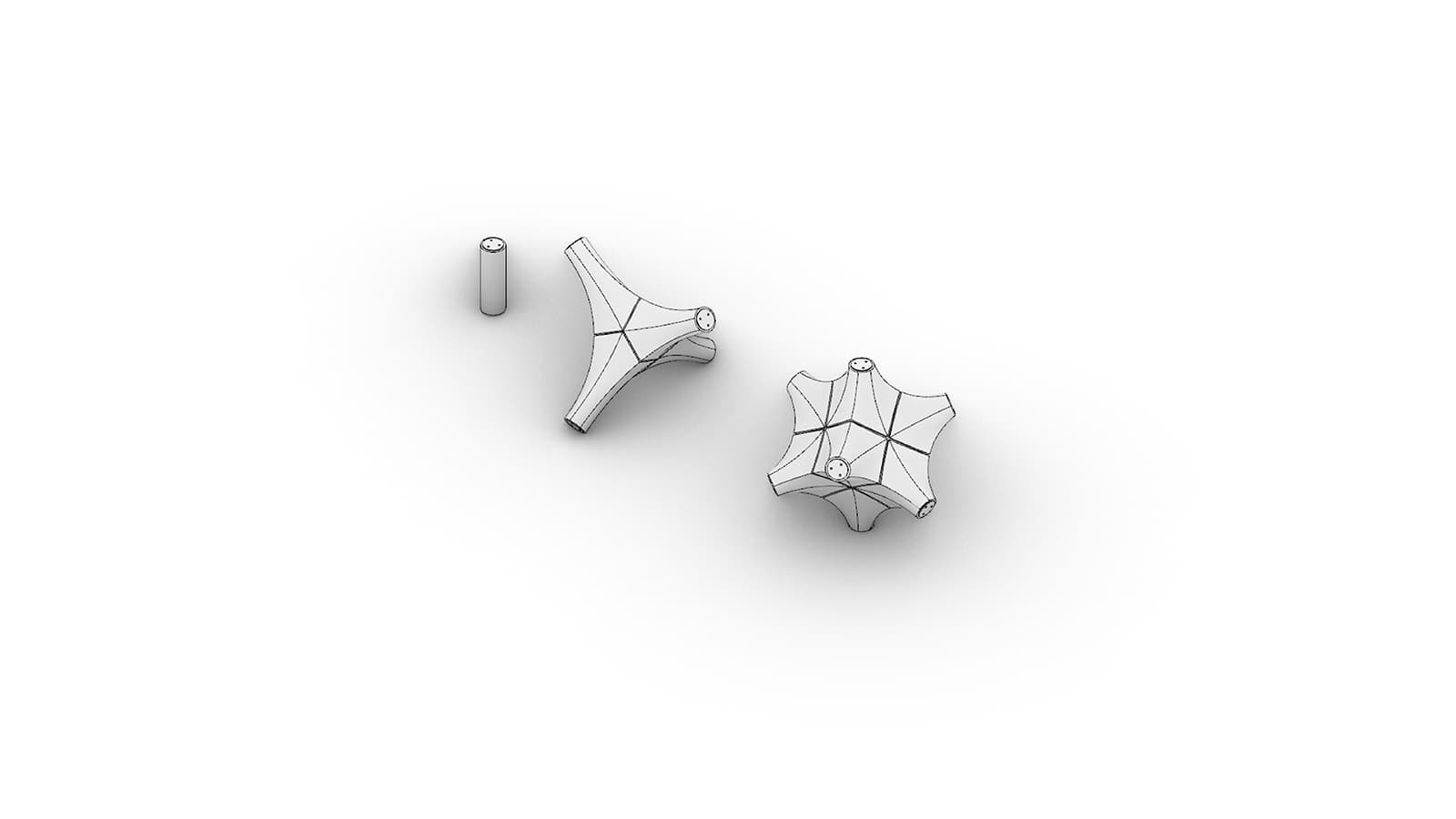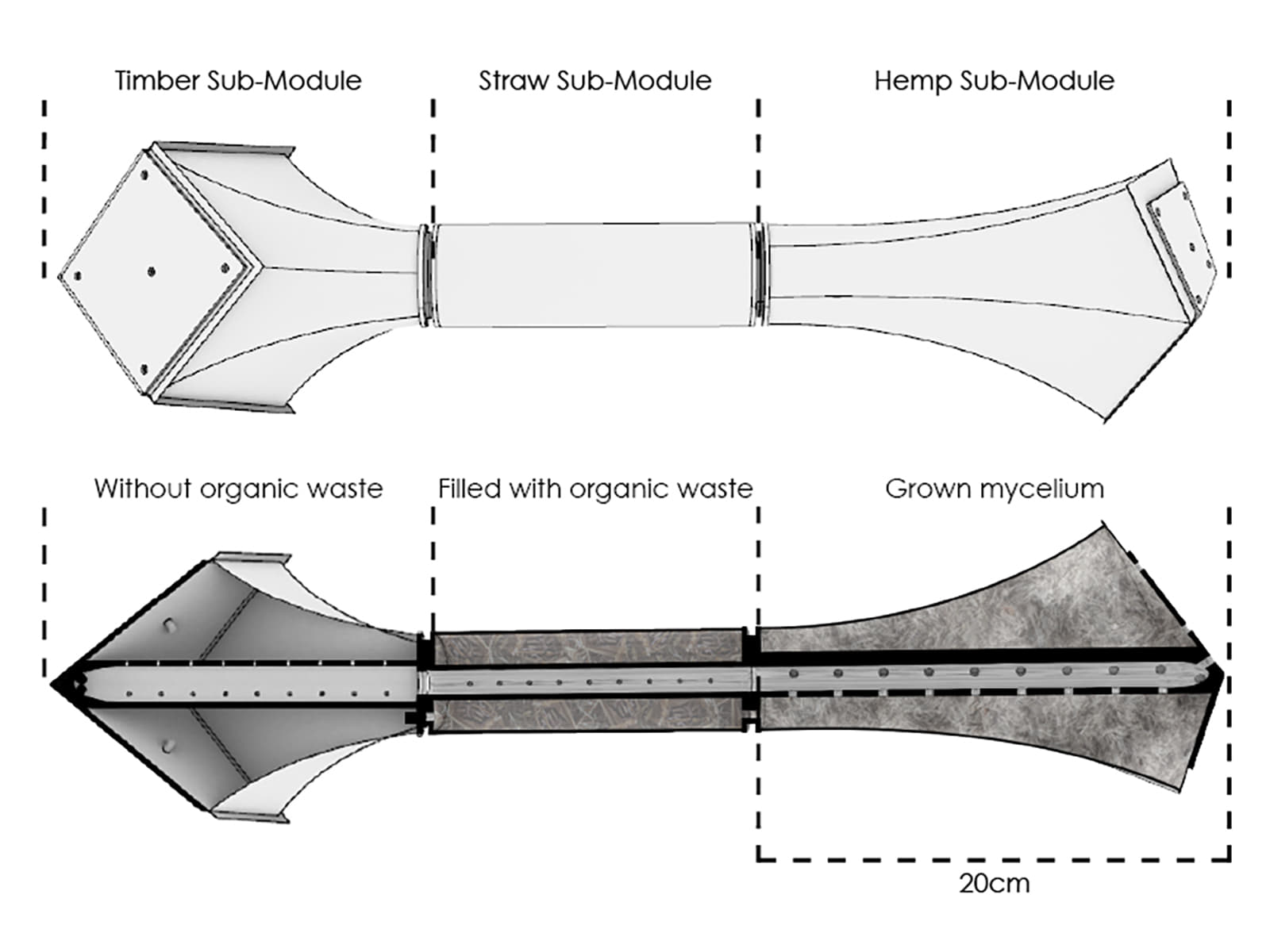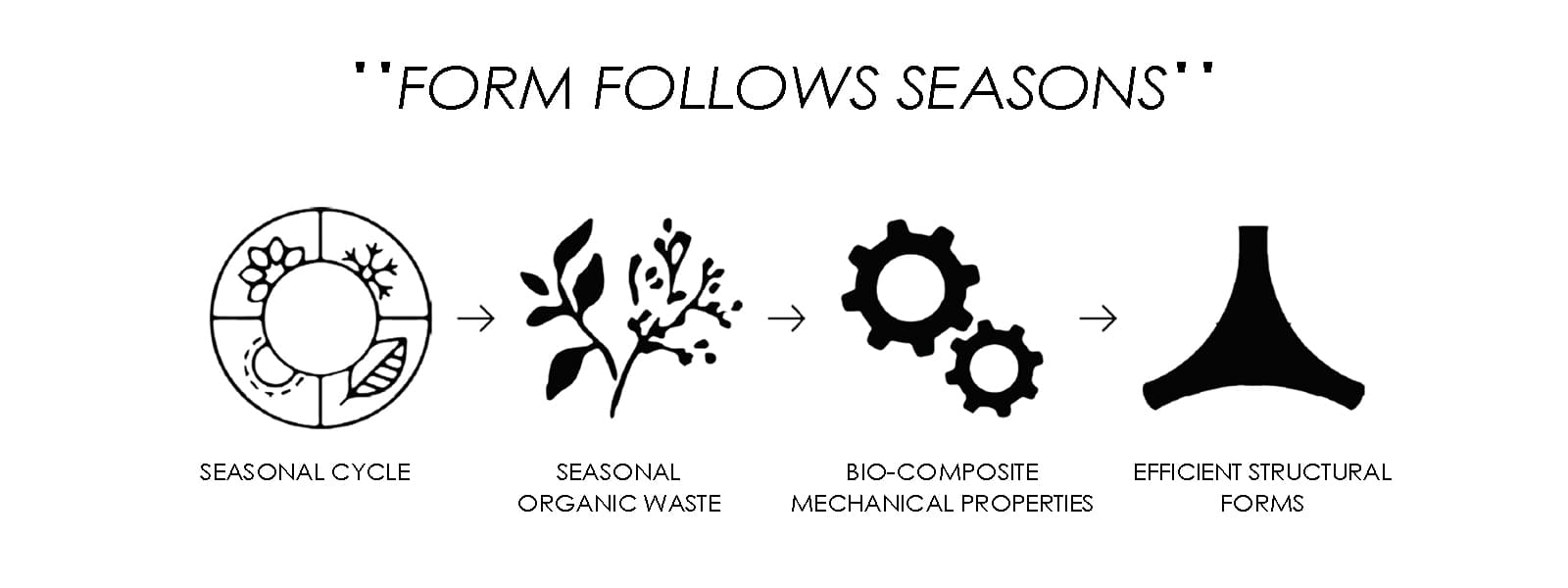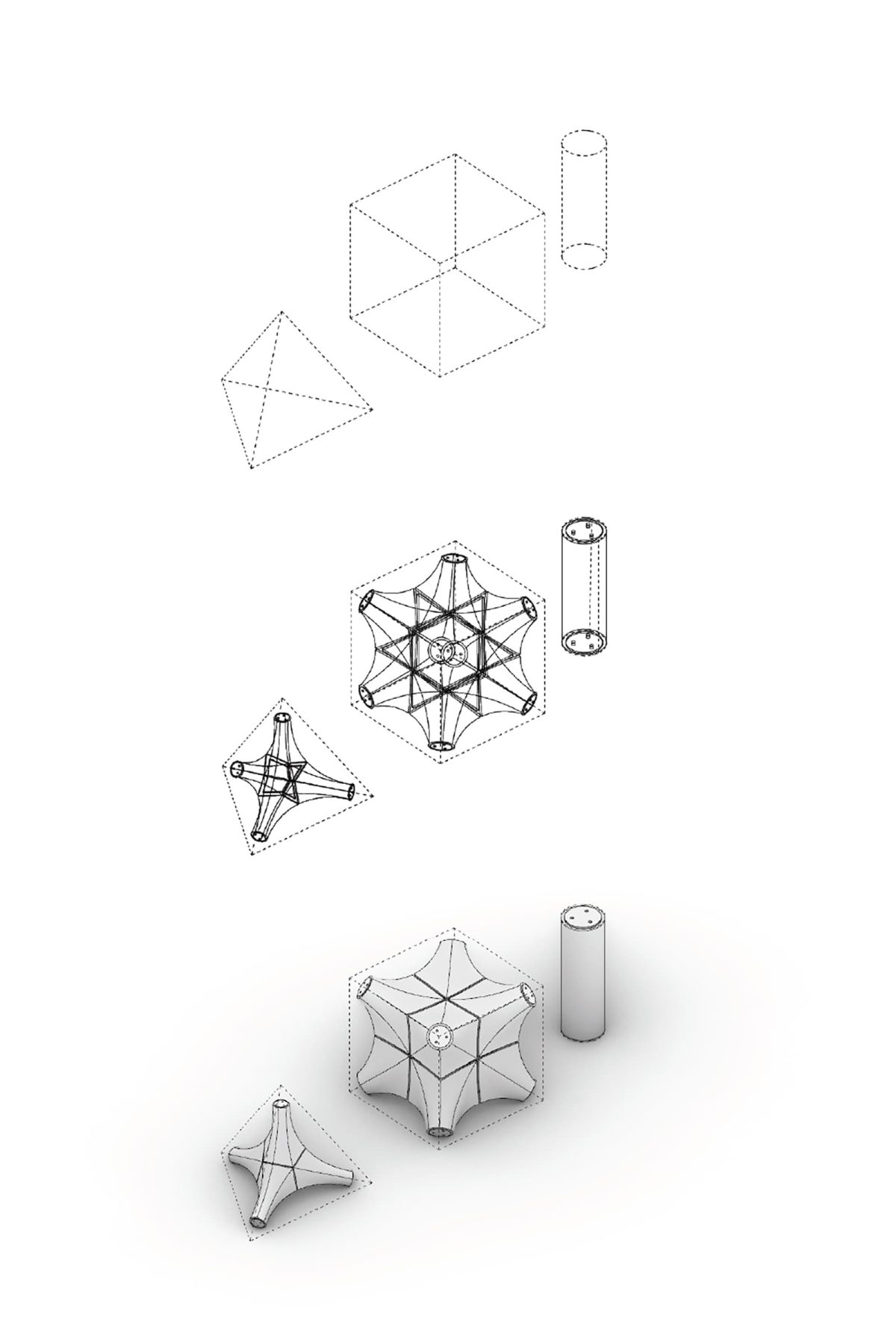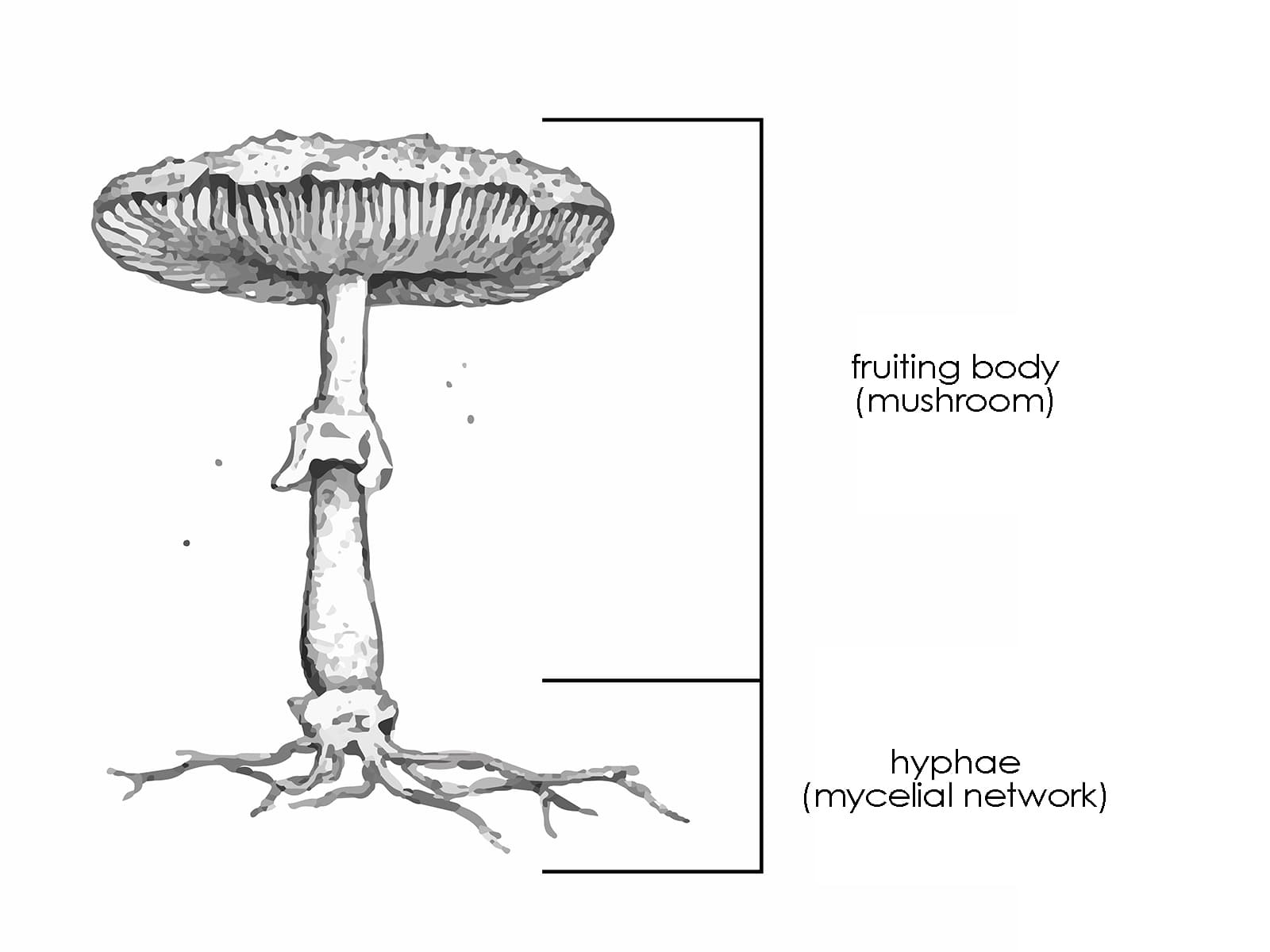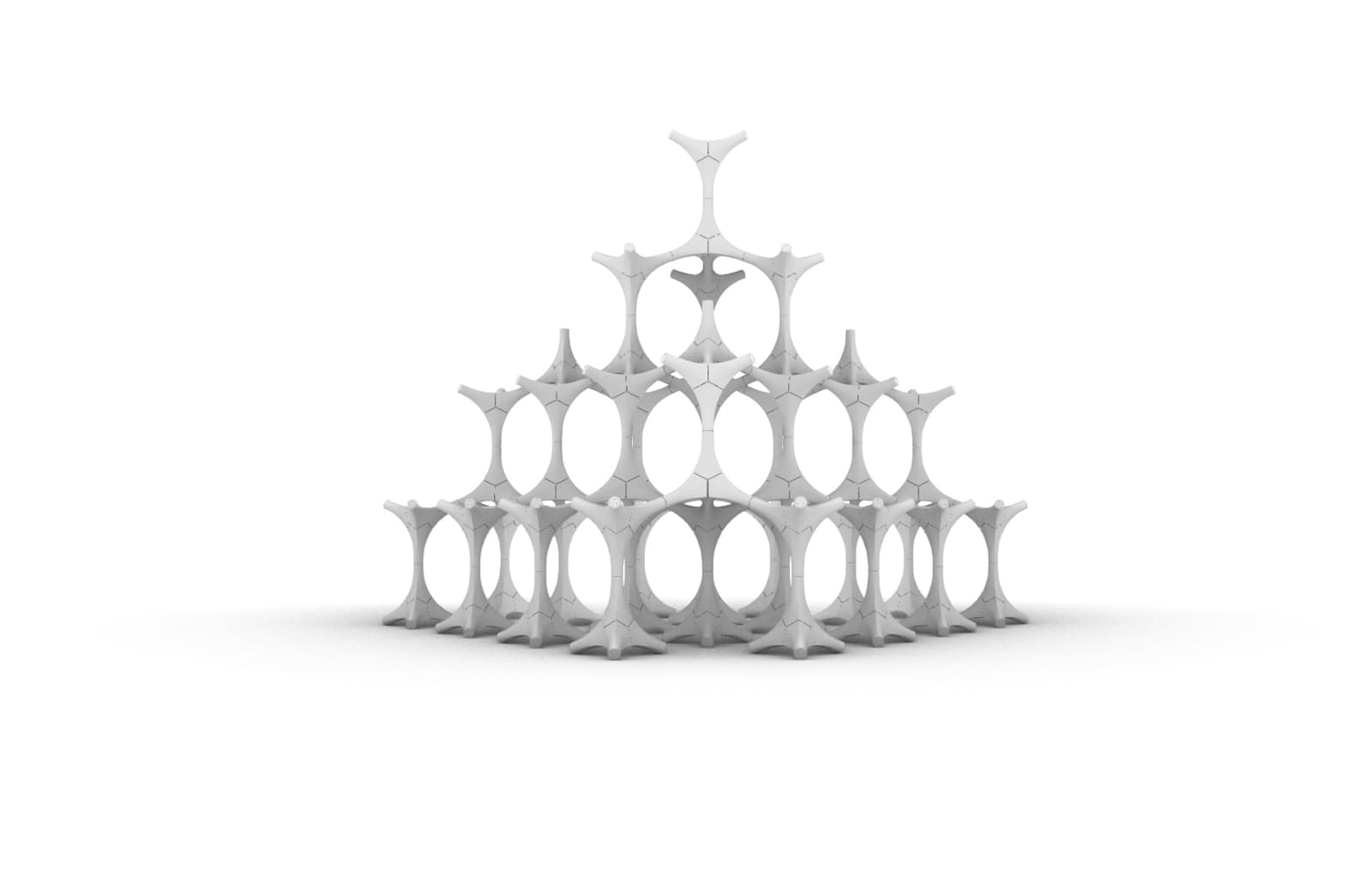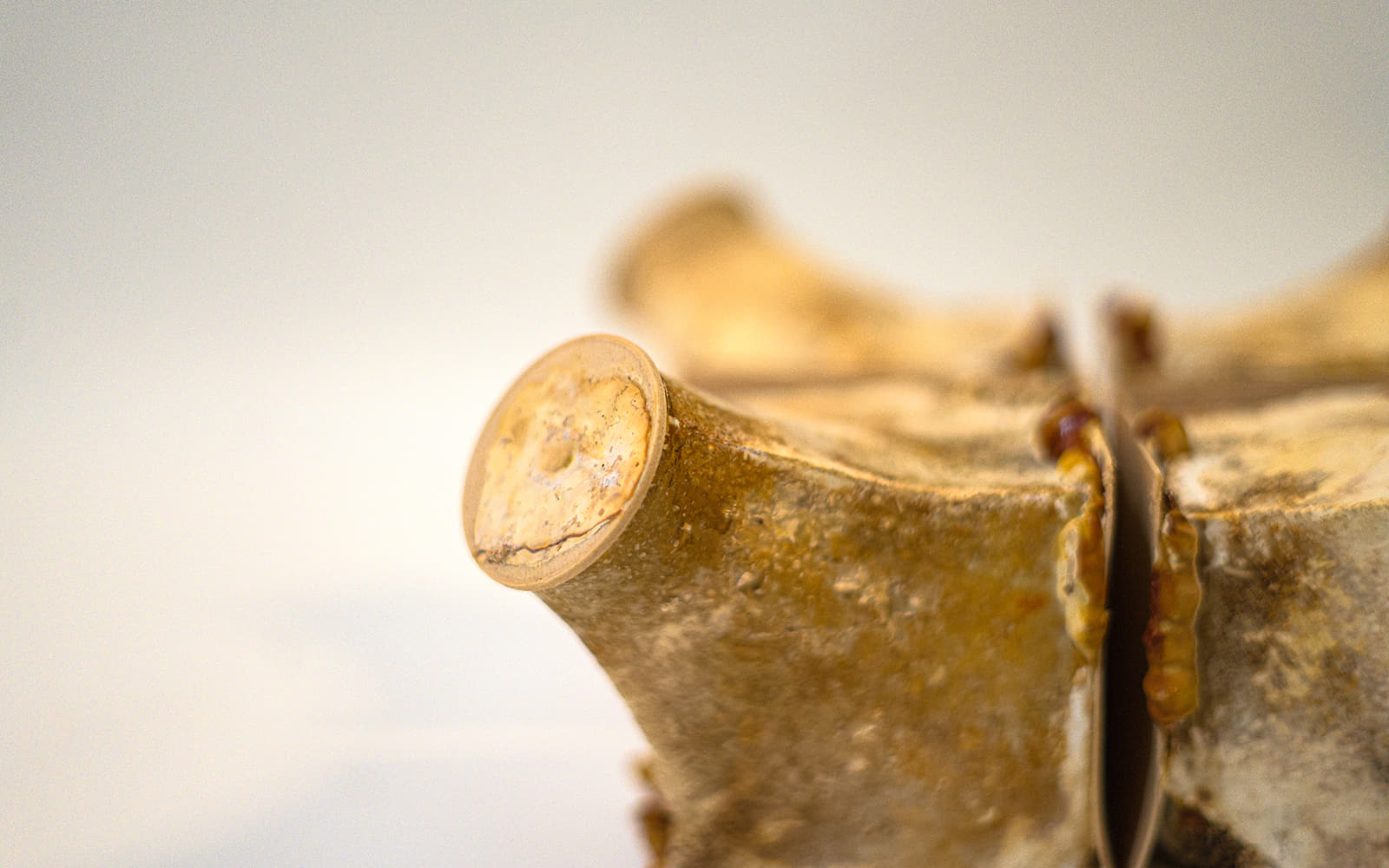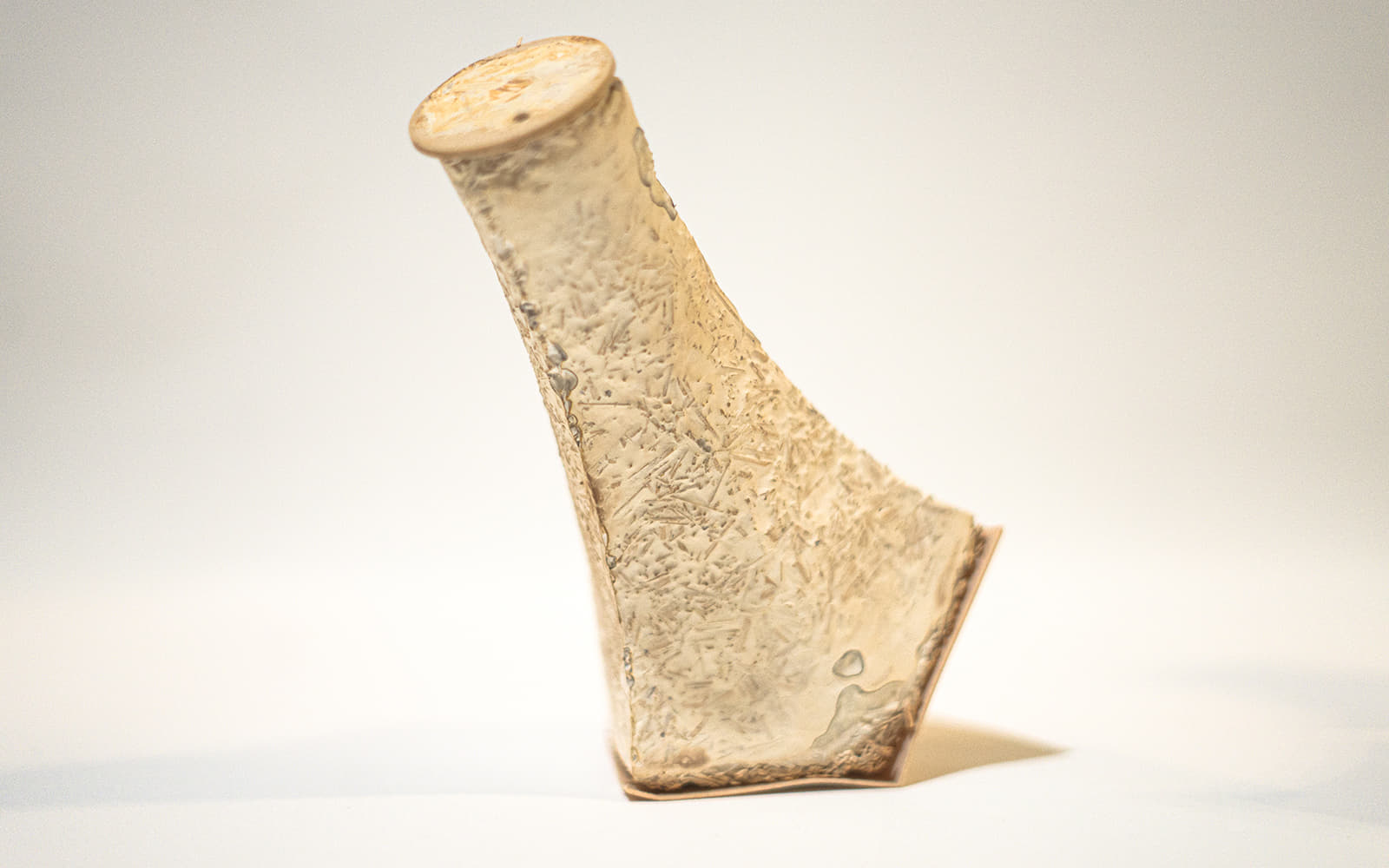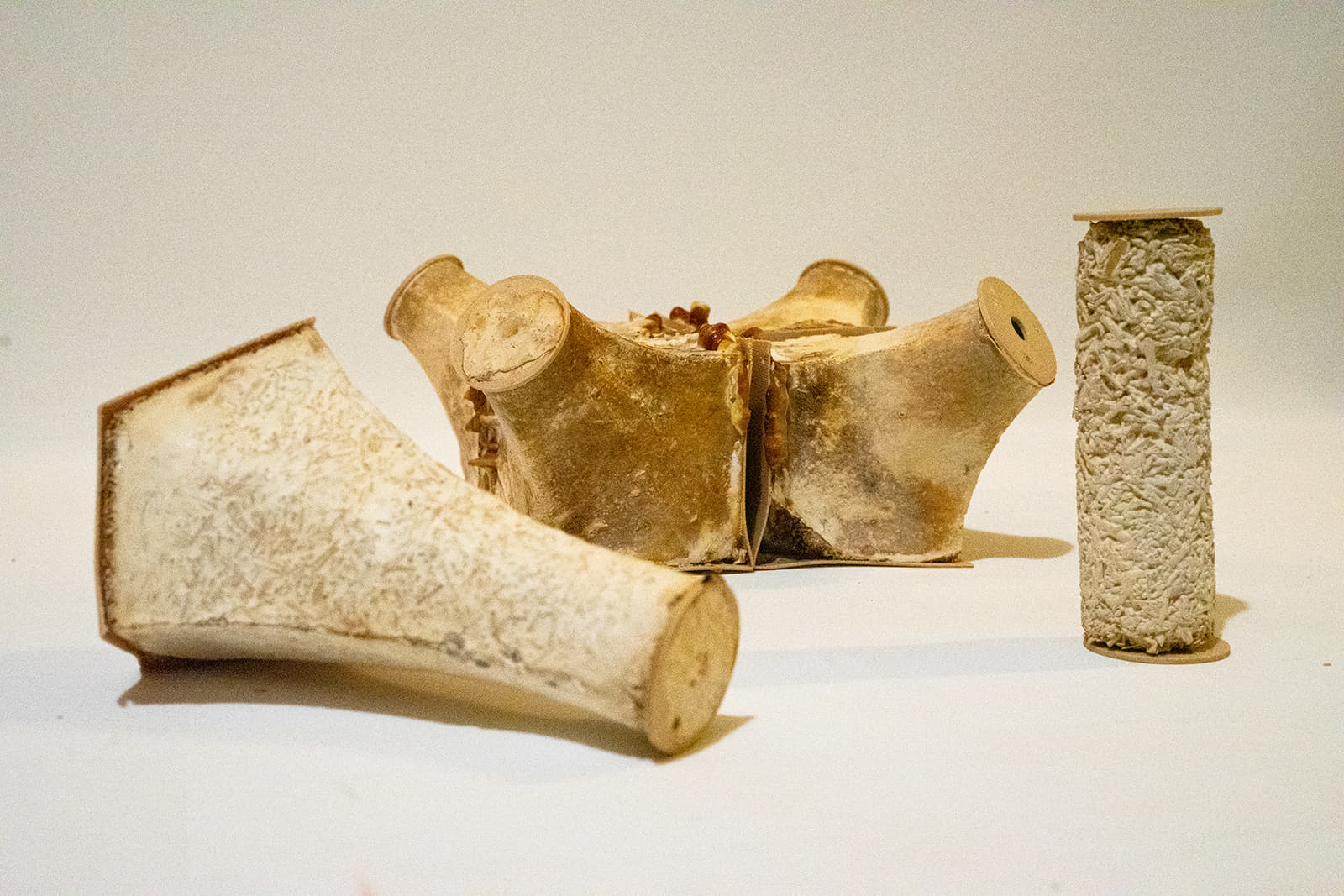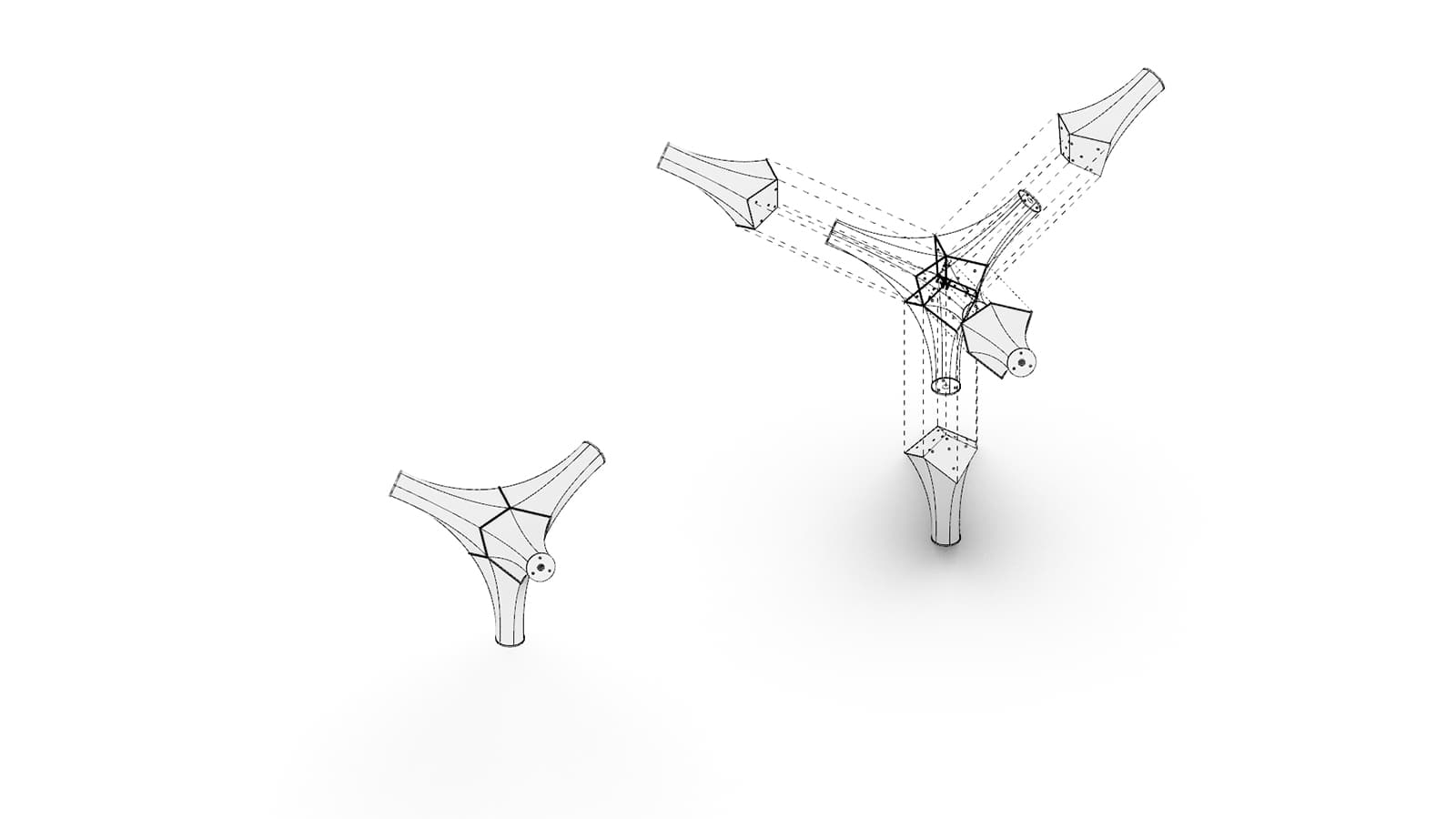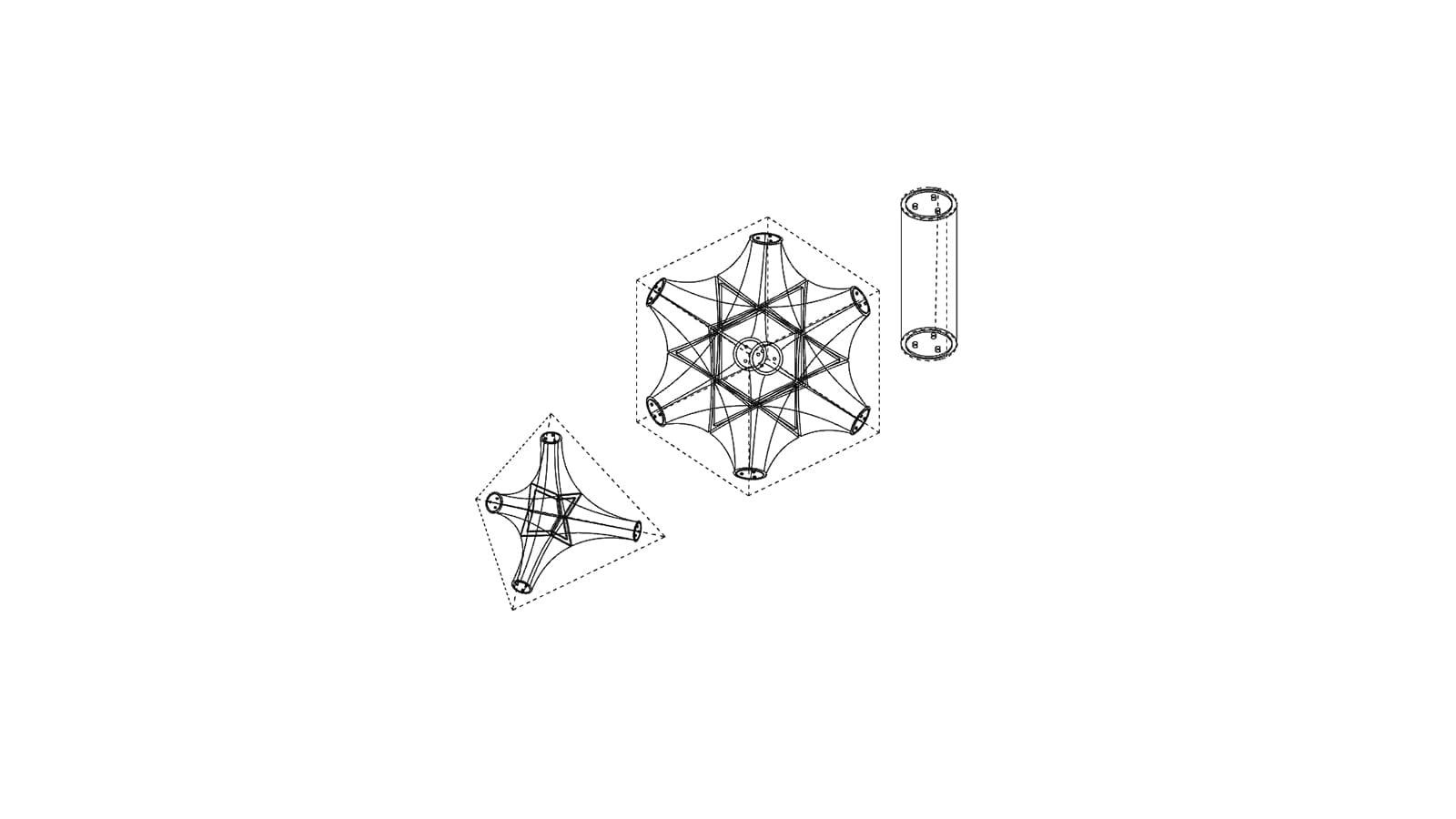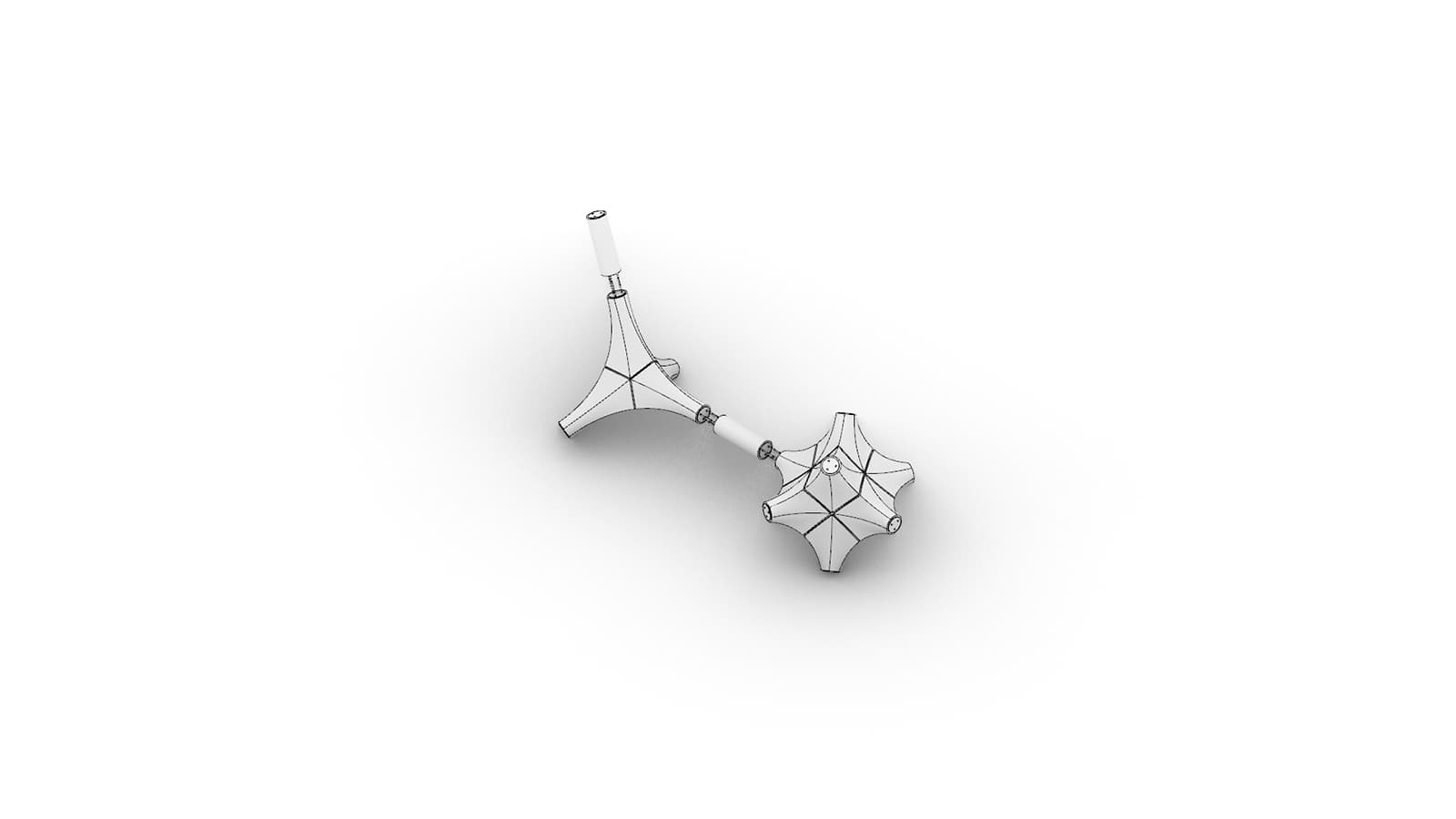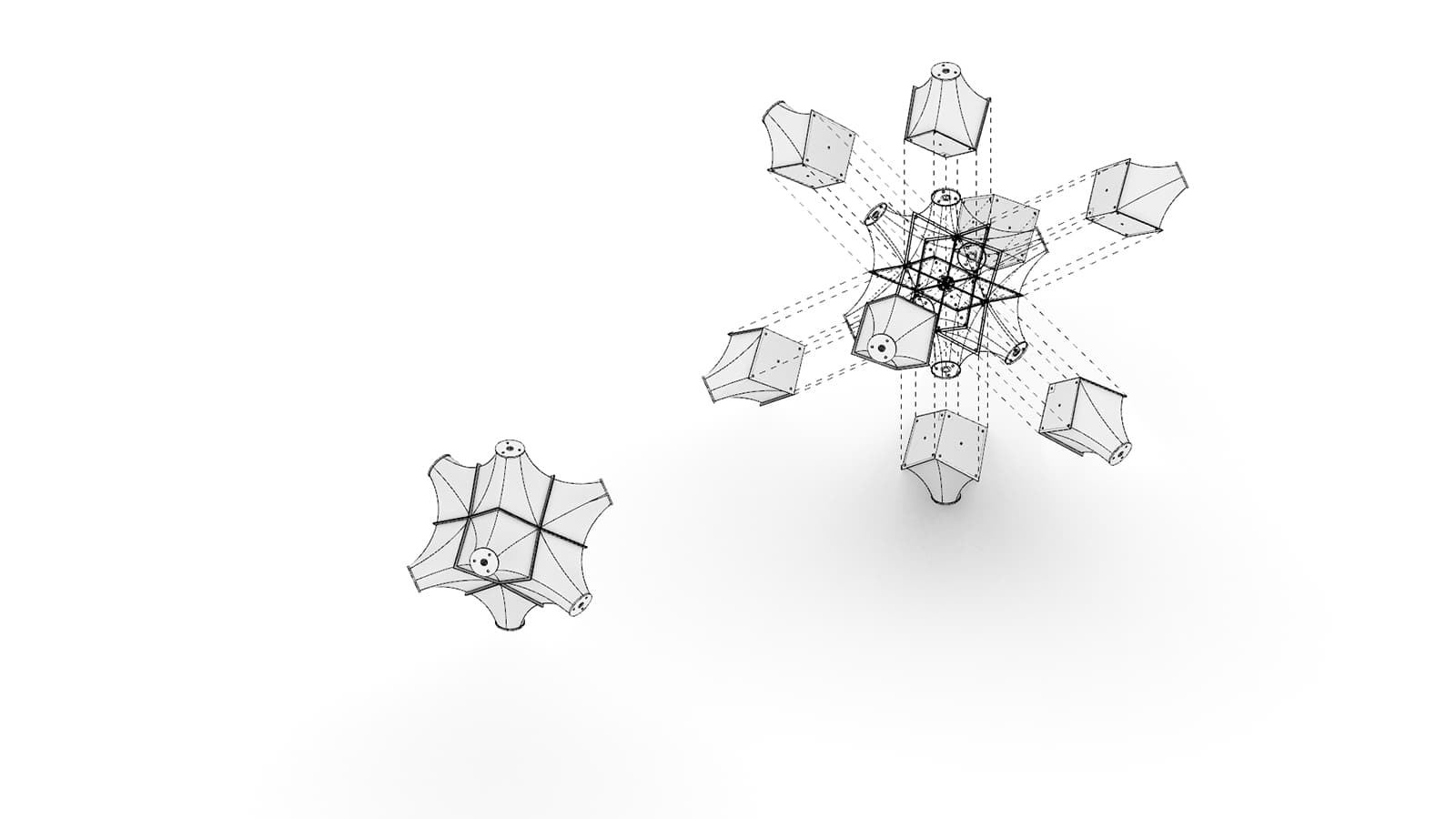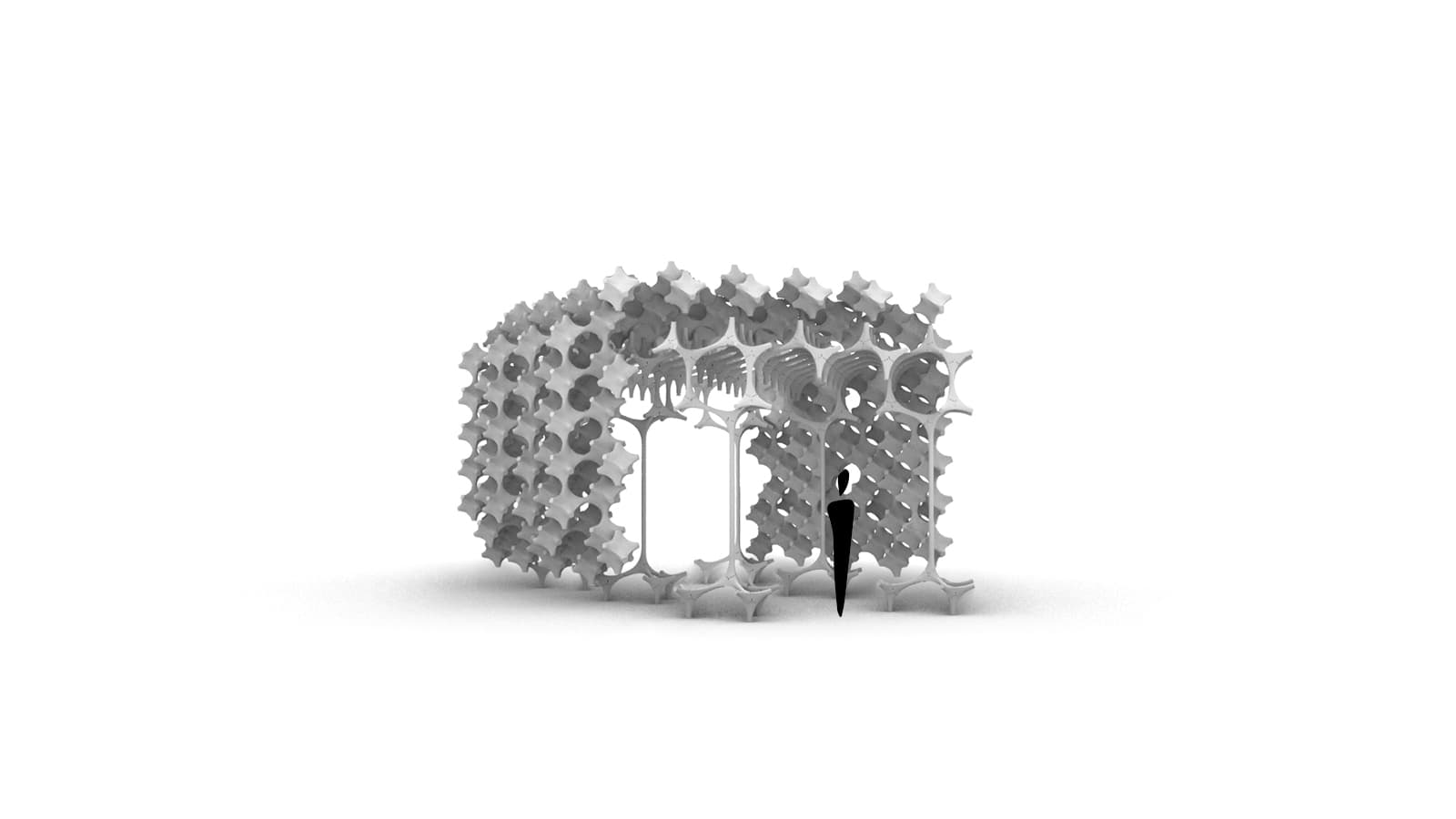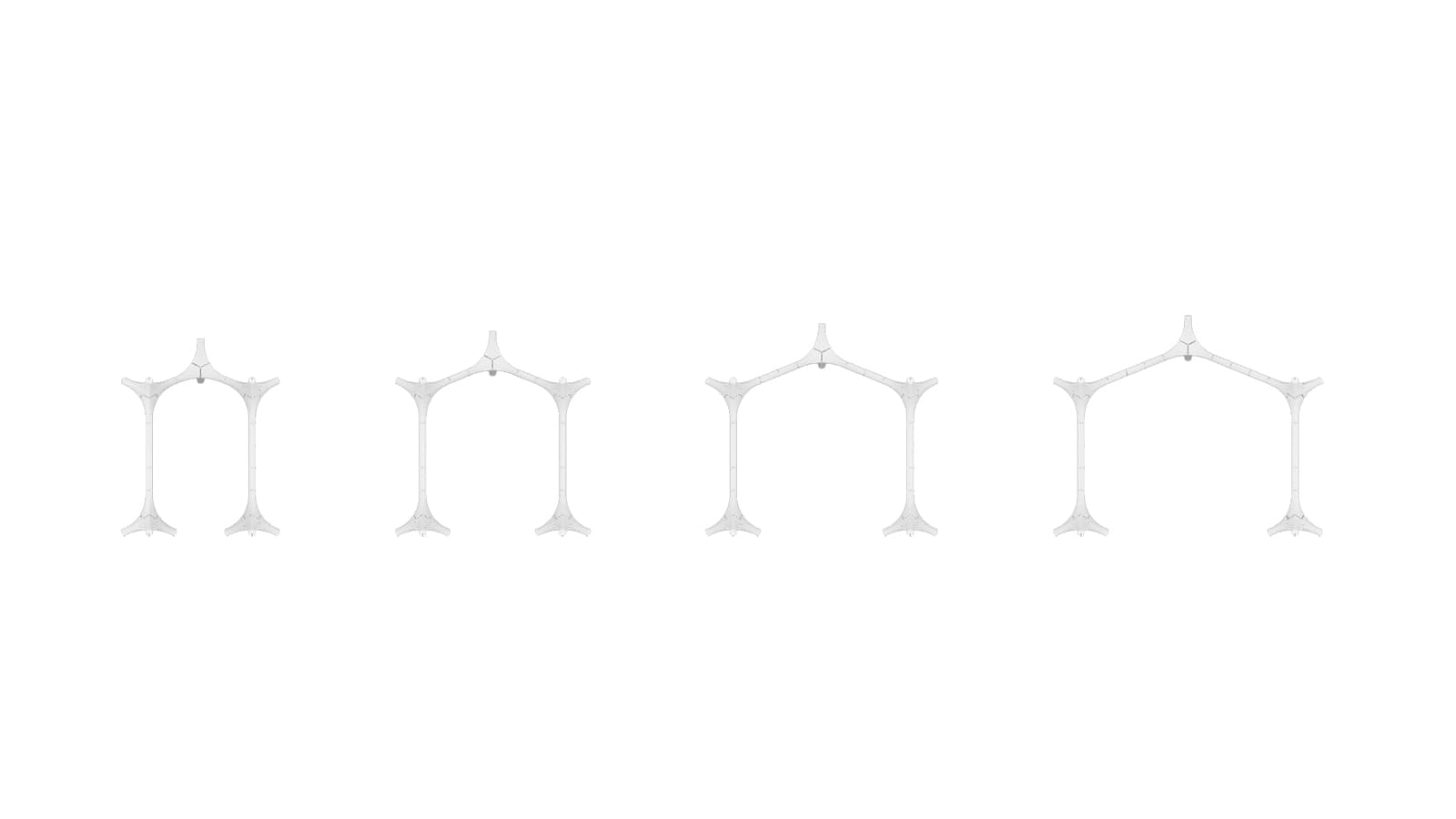How can architecture emerge through participatory processes, connecting human to natural, people to place, tradition, and biodiversity? In his diploma thesis project, student Gavriilidis Eustathios develops a design and construction system intended for multiple uses, reflecting both its ephemeral nature and the seasonality of agriculture.
This thesis addresses the environmental and cultural challenges of the contemporary world through architecture, biotechnology, and the revival of the human connection with nature.
At the core of the proposal is the use of Mycelium-Based Composites, materials created by combining organic agricultural waste with mycelium—the vegetative part of fungi.
This fully renewable and biodegradable material serves as the ecological basis for a temporary architectural structure designed for the community of Petroussa in Drama, Greece.
The project poses fundamental questions about the future of architecture: What if buildings could be cultivated and naturally decompose, following nature’s rhythms? How can architecture emerge through participatory processes, connecting people to place, tradition, and biodiversity?
The answer is provided through a design system that does not impose form but rather emerges organically from the dynamics of the materials, community participation, and modern digital technologies such as 3D-printed molds.
The structure, with no fixed form or predefined use, functions as a pavilion, theater set, or event space, reflecting its ephemeral and cyclical nature.
Its life cycle—from creation, communal use, to decomposition—is fully aligned with natural rhythms and local cultural practices.
Its dismantling coincides with traditional, pagan-rooted festivals in the area (such as the Dionysian rituals of Petroussa), creating a hybrid of architecture, ritual, and experiential space.
The agricultural by-products used as substrate are selected seasonally, reinforcing the project’s connection to the local environment and agricultural cycle.
For example, wheat straw is used in summer for its elasticity, while in autumn, materials like hemp and corn stalks are preferred for their compressive strength.
Overall, the thesis proposes a new approach to architecture that is both ecologically and culturally sensitive, where material, form, and use are not static but dynamic, participatory, and cyclical.
Through the innovative use of Mycelium-Based Composites and integration of local cultural practices, the project seeks to redefine the role of humans within the natural and social ecosystem.
The design software used for creating the digital models of the structure—and consequently the molds—was Rhinoceros 7, in combination with the visual programming language Grasshopper and the WASP plugin.
The printing of the maquettes was done using the Prusa MK4 printer, while the 3D printing software used was PrusaSlicer. The filaments used were from the companies PRUSA RESEARCH and Woodfill by ColorFabb.
For the fabrication of the test samples, a seeded hemp stalk substrate from the companies “Ecovative” and “Kineco” was used.
Facts & Credits
Project title Biomaterials & Structures: Mycelium as a dynamic mean of interconnections between human, architecture and nature
Type Diploma Thesis
Student Gavriilidis Eustathios
Supervisors Maristella Voutetaki, Dimitrios Giouzepas, Panagiotis Kozokos
University Dimocritus University of Thrace, School of Architecture
Text by the author
READ ALSO: Urban Permeability | Diploma Thesis by S.Krasopoulou & E.Paschali
